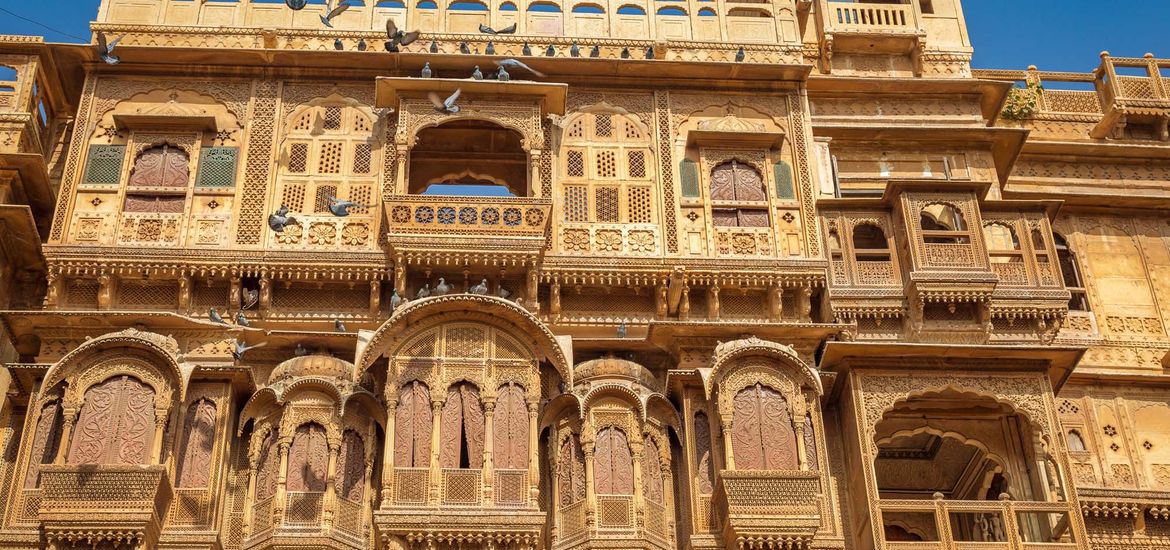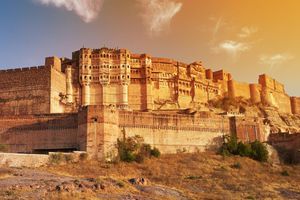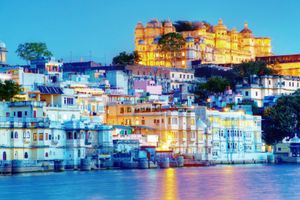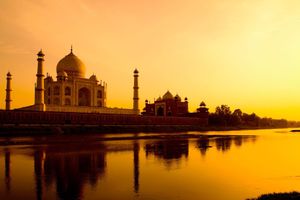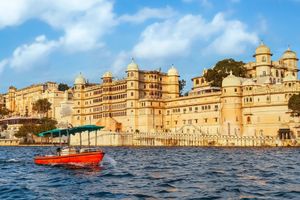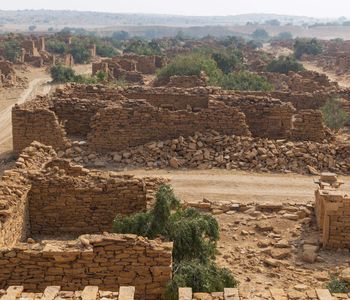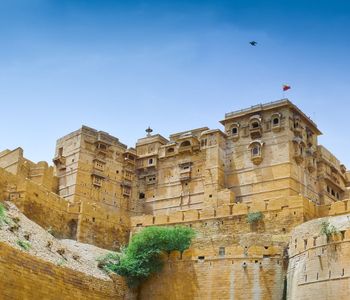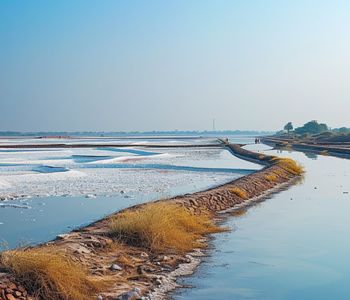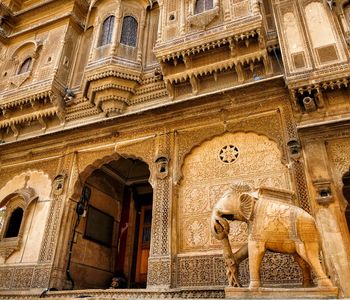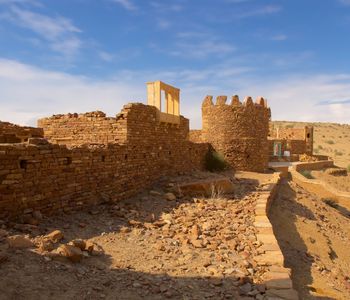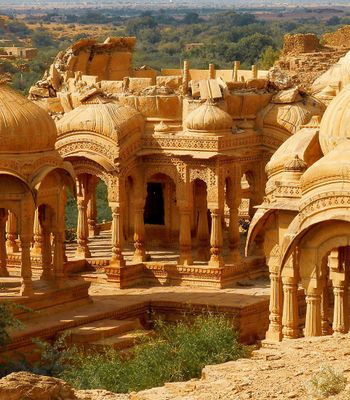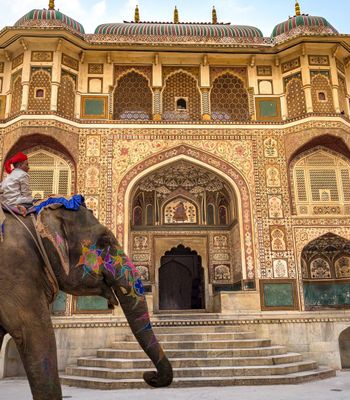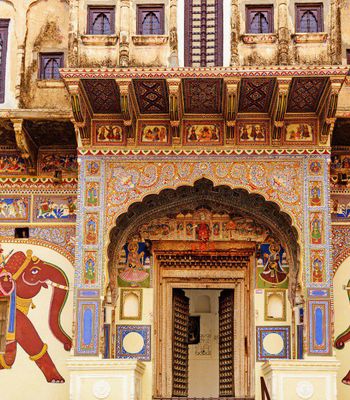Have you ever stepped into a place that seemed to be a time capsule, transporting you to a period of grandeur, riches, and artistic expression? If not, Patwon Ki Haveli in Jaisalmer needs to be on your travel agenda.
Though Rajasthan is well-known for its magnificent forts, royal palaces, and classic havelis, Patwon Ki Haveli is among the most amazing architectural wonders in the state. More than just a single estate, it is a cluster of five magnificent havelis, each telling its own tale of grandeur and artistic genius.
A Glimpse into the Glorious Past
The story of Patwon Ki Haveli begins with Guman Chand Patwa, a prosperous trader who decided in 1805 to build a grand haveli for his family, flaunting his riches and social standing. Unlike the royal palaces constructed by kings, this was a merchant's mansion—yet it matched the splendour of the best palaces in Rajasthan.
Dealing in gold and silver embroidery, Guman Chand Patwa was a profitable dealer. His wealth let him construct five magnificent havelis, one for every one of his sons. Designed over a 55-year period, these havelis evolved into icons of artistic brilliance and economic success.
Unlike forts that narrate stories of conquests and battles, Patwon Ki Haveli offers a glimpse into the affluence of Jaisalmer’s merchant elite. In Rajasthan, this is a rare example of a non-royal residence that has grown to be a significant historical site.
Over time, as the Patwa family’s fortunes declined, the ownership of the havelis changed hands. Today, some parts are maintained by the Archaeological Survey of India (ASI), while others serve as private residences and commercial establishments.
A Masterpiece of Craftsmanship
Reflecting the artistic inspirations of the time, Patwon Ki Haveli is a masterwork of Rajput, Mughal, and Victorian architectural traditions. Typical of Jaisalmer's architecture, yellow sandstone lends the haveli its distinctive golden hue.
The extraordinary degree of detail in the carvings highlights geometric patterns, floral themes, and legendary story portrayals. What sets this haveli apart is its finely carved facade, featuring more than sixty exquisitely designed balconies, each with a different style.
Key architectural features include:
- Intricately Adorned Walls: Stunning frescoes and delicate mirrorwork showcasing Rajasthan’s artistic heritage.
- Elegant Archways: Grand, sweeping arches that seamlessly connect various sections of the haveli.
- Expansive Courtyards: Thoughtfully designed open spaces that enhance ventilation and provide respite from the desert heat.
- Labyrinthine Passageways: A network of narrow staircases and corridors that add a sense of mystery and grandeur.
Unlike other havelis, which were primarily residential, Patwon Ki Haveli also served as a commercial hub, which explains its vast courtyards and open spaces.
Hidden Treasures of the Haveli
When visiting Patwon Ki Haveli, you should not miss:
The Museum
One of the havelis has been turned into a museum exhibiting 19th-century relics like exclusive furnishings, merchant items, antique furniture, accessories, and traditional textiles of the erstwhile patwas.
Intricate Stone Carvings
Among the most finely detailed in Rajasthan are the carvings found on the windows, doors, and balconies. Not only do these exquisitely carved windows enhance the appearance, but they are also naturally ventilated.
The Arched Gateway
The grand entrance is a marvel of architectural design, featuring intricate geometric and floral patterns that set the tone for the entire haveli.
Rooftop View
Ascend to the top of the haveli to enjoy a breathtaking panoramic view of Jaisalmer’s golden skyline, especially stunning at sunrise or sunset.
The Painted Ceilings
Many rooms boast colourful murals depicting royal processions, gods, and scenes from cultural life, adding a rich visual layer to the haveli’s historical charm.
Best Time to Witness Its Beauty
Patwon Ki Haveli is best visited from September to February when Jaisalmer's temperature is cool and comfortable. The scorching hot summers in Rajasthan make outdoor touring unpleasant.
For the best experience, visit during early mornings or late afternoons, when the sunlight enhances the golden glow of the sandstone, creating a breathtaking visual effect. These hours also help avoid peak tourist crowds.
The haveli is open daily from 9:00 AM to 6:30 PM, with an entry fee of ₹150 for Indian visitors and ₹300 for foreign tourists.
Getting There with Ease
Reaching Patwon Ki Haveli is straightforward, whether you're flying, taking a train, or arriving by road. Located in the heart of Jaisalmer’s old city, it is easily accessible from all major transport hubs. Here’s how you can get there:
By Air
The closest airport is Jaisalmer Airport (JSA), approximately 13.7 km away, but it has limited flight connectivity. Most travellers prefer flying into Jodhpur Airport (JDH), which is better connected to major Indian cities, and then taking a train, bus, or private taxi to Jaisalmer (a journey of about 5–6 hours).
By Train
Jaisalmer Railway Station, just 1 km from the haveli, connects the city to Delhi, Jaipur, Jodhpur, and other key destinations via long-distance trains. From the station, you can easily find auto-rickshaws or taxis to take you to the haveli.
By Bus
Jaisalmer is well-connected by a network of buses and highways, making it accessible from cities like Jaipur (599 km, approx. 10 hours), Jodhpur (273 km, approx. 4–5 hours) and Udaipur (497 km, approx. 9 hours). Luxury and state-run buses operate regularly, offering comfortable travel options.
Once in Jaisalmer, you can reach Patwon Ki Haveli by:
- Auto-rickshaws and cycle rickshaws: Affordable and convenient for navigating the narrow lanes of the old city.
- Walking: Since the haveli is located in the historic quarter, exploring on foot is the best way to soak in the charm of Jaisalmer.
- Rented scooters: Ideal for independent travellers looking to explore at their own pace.
Patwon Ki Haveli is more than just a historical mansion; it is a treasure trove of cultural heritage and a testament to Jaisalmer’s glorious past. So, the next time you find yourself wandering through Jaisalmer’s golden streets, make sure to step inside Patwon Ki Haveli—where history, art, and grandeur come alive in every carved stone and painted ceiling.
